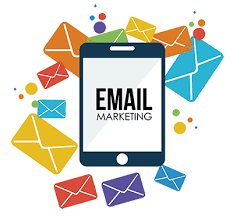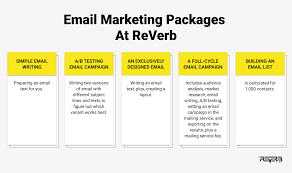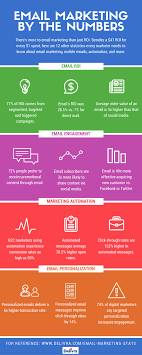Email Marketing: The Cornerstone of Digital Marketing
In today’s fast-paced digital world, businesses are constantly seeking effective strategies to reach and engage with their target audience. Among the plethora of marketing techniques available, one method has stood the test of time: email marketing. With its ability to deliver personalized messages directly to individuals’ inboxes, email marketing remains a cornerstone of digital marketing strategies.
Email marketing offers several distinct advantages that make it an invaluable tool for businesses of all sizes. Firstly, it provides a direct line of communication with potential customers. Unlike social media or other advertising channels, email allows businesses to establish a one-on-one connection with their audience. This personal touch fosters trust and builds long-lasting relationships.
Another key benefit of email marketing is its cost-effectiveness. Compared to traditional marketing methods like print advertising or direct mail campaigns, sending emails is significantly more affordable. With minimal investment, businesses can reach a large number of recipients instantly, making it an ideal choice for startups and small businesses with limited budgets.
One of the most compelling aspects of email marketing is its unparalleled targeting capabilities. Through segmentation and personalization, businesses can tailor their messages based on factors such as demographics, interests, or previous purchase history. This level of customization ensures that recipients receive content that is relevant and meaningful to them, leading to higher engagement and conversion rates.
Furthermore, email marketing allows for precise tracking and analysis. With advanced analytics tools at their disposal, marketers can monitor open rates, click-through rates, and conversion rates in real-time. This data provides valuable insights into the effectiveness of campaigns and enables marketers to make data-driven decisions for future improvements.
To maximize the effectiveness of email marketing campaigns, there are several best practices to consider. Firstly, building a quality subscriber list is crucial. Businesses should focus on attracting genuine subscribers who have shown interest in their products or services. Implementing opt-in forms on websites or offering valuable incentives can help grow an engaged and receptive audience.
Crafting compelling and relevant content is equally important. Emails should provide value to recipients, whether through informative articles, exclusive offers, or personalized recommendations. By delivering content that resonates with subscribers, businesses can establish themselves as trusted authorities in their respective industries.
Additionally, optimizing emails for mobile devices is vital. With the majority of people accessing their emails on smartphones or tablets, responsive design ensures that messages are visually appealing and easy to navigate across different screen sizes. Neglecting mobile optimization may result in a poor user experience and lower engagement rates.
In conclusion, email marketing remains an essential component of any comprehensive digital marketing strategy. Its ability to establish direct communication, its cost-effectiveness, precise targeting capabilities, and extensive tracking and analysis make it a powerful tool for businesses looking to engage with their audience effectively. By implementing best practices and staying up-to-date with evolving trends, businesses can leverage the full potential of email marketing to drive growth and achieve long-term success in the digital landscape.
Frequently Asked Questions: Email Marketing in Digital Marketing
- What is email marketing tools?
- What are the 4 types of email marketing?
- What are the 3 types of email marketing?
- What is email marketing in direct marketing?
- Why is email marketing important in digital marketing?
- What are the 4 types of marketing emails?
- What is email marketing in digital marketing?
- What are the methods of email marketing?
What is email marketing tools?
Email marketing tools are software platforms or applications that help businesses and marketers automate, streamline, and optimize their email marketing campaigns. These tools provide a range of features and functionalities to manage various aspects of email marketing, including creating and designing email templates, managing subscriber lists, scheduling and sending emails, tracking campaign performance, and analyzing data.
Some common features offered by email marketing tools include:
- Email Template Design: Tools often provide intuitive drag-and-drop editors or pre-designed templates that allow users to create visually appealing emails without coding knowledge.
- Subscriber List Management: These tools enable businesses to import, segment, and organize their subscriber lists. Segmentation allows for targeted messaging based on demographics, interests, or past interactions.
- Automation: Email marketing tools offer automation capabilities to schedule and send emails based on predefined triggers or customer actions. This includes welcome emails, abandoned cart reminders, birthday greetings, or personalized follow-ups.
- A/B Testing: Tools allow marketers to test different subject lines, content variations, or call-to-action buttons to optimize email performance and increase engagement rates.
- Analytics and Reporting: Robust analytics help track key metrics such as open rates, click-through rates (CTRs), conversion rates, bounce rates, and unsubscribe rates. Reporting features provide insights into campaign effectiveness and help refine future strategies.
- Integration with Other Platforms: Many email marketing tools integrate with customer relationship management (CRM) systems or e-commerce platforms to sync data seamlessly between different systems for a more comprehensive view of customer interactions.
- Compliance with Email Regulations: Good email marketing tools ensure compliance with anti-spam laws by including unsubscribe links in emails and following opt-in/opt-out requirements.
Popular email marketing tools include Mailchimp, Constant Contact, Sendinblue, GetResponse, Campaign Monitor, and many others. The choice of tool depends on specific business needs such as budget constraints, desired features/functionality level required scalability options integration capabilities with existing systems, and customer support.
What are the 4 types of email marketing?
There are four primary types of email marketing campaigns that businesses commonly use to engage with their audience:
- Promotional Emails: These emails are designed to promote specific products, services, or offers. They often include discounts, limited-time deals, or special promotions to incentivize recipients to make a purchase. Promotional emails can be effective for driving sales and increasing customer engagement.
- Newsletter Emails: Newsletter emails are regular communications sent to subscribers with the aim of providing valuable content and updates. They typically contain industry news, informative articles, company updates, and curated content that is relevant to the audience’s interests. Newsletter emails help build brand loyalty and establish businesses as thought leaders in their respective industries.
- Transactional Emails: Transactional emails are triggered by specific user actions or interactions with a website or app. Examples include order confirmations, shipping notifications, password reset emails, or abandoned cart reminders. While transactional emails serve a functional purpose, they also present an opportunity for businesses to cross-sell or upsell related products and services.
- Welcome Emails: Welcome emails are sent to new subscribers or customers upon joining a mailing list or making their first purchase. These emails provide a warm introduction to the brand and often include a thank you message along with relevant information about the company’s products, services, or exclusive offers. Welcome emails help establish a positive first impression and set the stage for future engagement.
By utilizing these different types of email marketing campaigns strategically, businesses can effectively nurture relationships with their audience, drive conversions, and achieve their marketing goals. It’s important to tailor each campaign type to suit the specific needs and preferences of the target audience for optimal results.
What are the 3 types of email marketing?
The three types of email marketing are:
- Promotional Emails: Promotional emails are designed to promote a specific product, service, or offer. These emails typically highlight the features and benefits of the offering and include a call-to-action (CTA) that encourages recipients to make a purchase, sign up for a trial, or take advantage of a limited-time offer. Promotional emails are commonly used to drive sales and conversions.
- Transactional Emails: Transactional emails are triggered by specific actions or events, such as a purchase confirmation, shipping notification, password reset, or subscription renewal. These emails provide important information to customers related to their transactions and often include receipts, order details, or account updates. While transactional emails primarily serve a functional purpose, they can also be an opportunity to cross-sell or upsell related products or services.
- Relationship-Building Emails: Relationship-building emails focus on nurturing and strengthening the connection between businesses and their subscribers. These emails aim to provide value beyond promotional offers by delivering informative content, educational resources, industry insights, or personalized recommendations. Relationship-building emails help establish trust and credibility with subscribers and foster long-term customer loyalty.
Each type of email serves a different purpose within an overall email marketing strategy. By utilizing a combination of promotional, transactional, and relationship-building emails, businesses can effectively engage their audience at various stages of the customer journey while achieving their marketing objectives.
What is email marketing in direct marketing?
Email marketing in direct marketing refers to the practice of using email as a direct communication channel to promote products, services, or offers to a specific target audience. It involves sending commercial messages, newsletters, or promotional content directly to individuals’ email addresses.
In direct marketing, the goal is to establish a direct and personalized connection with potential customers. Email marketing allows businesses to reach out to individuals who have willingly provided their email addresses or have shown interest in their products or services. This form of marketing enables businesses to deliver tailored messages directly to the inbox of their target audience.
Email marketing in direct marketing offers several advantages. Firstly, it allows for precise targeting and segmentation. Businesses can divide their email list based on various criteria such as demographics, interests, or purchase history. This segmentation enables them to send highly relevant and personalized content that resonates with recipients.
Secondly, email marketing provides a cost-effective solution for businesses. Compared to traditional direct mail campaigns or telemarketing efforts, sending emails incurs lower costs while reaching a wider audience instantly. This affordability makes it an attractive option for businesses of all sizes, including small businesses and startups with limited budgets.
Furthermore, email marketing offers measurable results and analytics. Marketers can track open rates, click-through rates, conversion rates, and other key metrics in real-time. This data provides valuable insights into the effectiveness of campaigns and helps marketers make informed decisions for future improvements.
Email marketing in direct marketing also allows for automation and personalization at scale. With automation tools, businesses can set up triggered emails based on user actions or specific time intervals. Personalization features enable marketers to address recipients by name and tailor content based on their preferences or past interactions.
However, it’s important for businesses engaged in email marketing as part of their direct marketing efforts to comply with relevant regulations such as GDPR (General Data Protection Regulation) or CAN-SPAM Act (Controlling the Assault of Non-Solicited Pornography And Marketing Act). These regulations ensure that businesses obtain proper consent, provide opt-out options, and handle personal data responsibly.
Overall, email marketing in direct marketing is a powerful tool that allows businesses to establish direct communication with their target audience. By leveraging the benefits of precise targeting, cost-effectiveness, measurability, automation, and personalization, businesses can effectively promote their products or services and build strong relationships with their customers.
Why is email marketing important in digital marketing?
Email marketing plays a vital role in digital marketing for several reasons:
- Direct and Personal Communication: Email allows businesses to communicate directly with their target audience. By sending personalized messages to individuals’ inboxes, businesses can establish a direct line of communication, fostering a sense of trust and building stronger relationships.
- Cost-Effective: Compared to traditional marketing channels like print advertising or direct mail campaigns, email marketing is highly cost-effective. It eliminates the need for printing and postage costs, making it an affordable option for businesses of all sizes, particularly for those with limited budgets.
- Targeted and Segmented Approach: Email marketing enables businesses to segment their audience based on various factors such as demographics, interests, or purchase history. This segmentation allows for highly targeted campaigns, ensuring that the right message reaches the right people at the right time. By delivering relevant content, businesses can increase engagement and conversion rates.
- Measurable Results: One of the significant advantages of email marketing is its ability to provide measurable results. With advanced analytics tools, businesses can track key metrics such as open rates, click-through rates, and conversion rates in real-time. This data helps marketers understand campaign performance and make data-driven decisions for continuous improvement.
- Automation and Personalization: Email marketing platforms offer automation features that allow businesses to send automated messages based on triggers or specific actions taken by subscribers. This automation saves time and effort while delivering timely and relevant content to subscribers. Additionally, personalization features enable businesses to address recipients by name or tailor content based on their preferences, enhancing the overall customer experience.
- Increased Conversions and ROI: Studies consistently show that email marketing delivers high returns on investment (ROI). By nurturing leads through targeted emails and providing valuable content, businesses can guide recipients through the sales funnel more effectively, leading to increased conversions and revenue generation.
- Retention and Customer Loyalty: Email marketing is not only useful for acquiring new customers but also for retaining existing ones. Regularly engaging with customers through newsletters, exclusive offers, or personalized recommendations helps businesses stay top-of-mind and foster customer loyalty over time.
In summary, email marketing is important in digital marketing because it enables direct and personal communication, is cost-effective, allows for targeted and segmented campaigns, provides measurable results, offers automation and personalization features, increases conversions and ROI, and helps with customer retention and loyalty. By leveraging the power of email marketing effectively, businesses can drive growth, build relationships with their audience, and achieve long-term success in the digital landscape.
What are the 4 types of marketing emails?
There are several types of marketing emails that businesses can utilize to engage with their audience. Here are four common types:
- Promotional Emails: These emails focus on promoting products, services, or special offers. They aim to generate sales or drive conversions by showcasing discounts, limited-time offers, or new product releases. Promotional emails often include compelling visuals and persuasive copy to encourage recipients to take action.
- Newsletter Emails: Newsletter emails provide valuable and informative content to subscribers on a regular basis. They can include industry news, educational articles, tips and tricks, or updates about the company’s latest developments. Newsletters help build brand loyalty and establish a relationship with subscribers by consistently delivering relevant and engaging content.
- Welcome Emails: Welcome emails are sent to new subscribers immediately after they sign up for a company’s email list. These emails serve as an introduction and set the tone for future communications. They typically express gratitude for joining the list, provide a brief overview of what subscribers can expect, and may offer a special welcome discount or exclusive content.
- Cart Abandonment Emails: Cart abandonment emails target customers who have added items to their online shopping cart but haven’t completed the purchase. These emails aim to remind and incentivize customers to return and complete their purchase by offering discounts, free shipping, or other incentives. Cart abandonment emails help recover potentially lost sales and encourage customer retention.
It’s important for businesses to consider their specific goals and target audience when choosing the type of marketing email that best suits their needs. Additionally, combining different types of marketing emails in a strategic manner can create a well-rounded email marketing campaign that effectively engages recipients throughout their customer journey.
What is email marketing in digital marketing?
Email marketing is a digital marketing strategy that involves sending targeted messages or promotional content to a group of individuals via email. It is a highly effective method for businesses to connect with their audience, build relationships, and promote products or services.
In email marketing, businesses typically collect email addresses from interested individuals through various means such as website sign-ups, lead generation forms, or customer databases. These collected email addresses form the subscriber list, which becomes the recipient base for the marketing campaigns.
Once the subscriber list is established, businesses can create and send emails to their subscribers on a regular basis. These emails can be in the form of newsletters, product updates, special offers, event invitations, or any other relevant content that adds value to the recipient’s inbox.
The success of an email marketing campaign often hinges on personalization and segmentation. Personalization involves tailoring the content of each email to suit the specific interests and preferences of individual subscribers. This can be achieved by using recipient data such as name, location, purchase history, or previous interactions with the business.
Segmentation involves dividing the subscriber list into specific groups based on certain criteria like demographics, interests, or engagement levels. By segmenting the list, businesses can create more targeted and relevant campaigns for each group. This increases the chances of delivering content that resonates with recipients and drives higher engagement rates.
Email marketing platforms provide tools and features that enable businesses to design visually appealing emails using pre-designed templates or custom designs. These platforms also offer automation capabilities that allow businesses to schedule and automate email delivery based on triggers or predefined workflows. Automation helps streamline processes and ensures timely communication with subscribers.
To measure the effectiveness of an email marketing campaign, various metrics are tracked and analyzed. Key performance indicators (KPIs) include open rates (percentage of recipients who open an email), click-through rates (percentage of recipients who click on links within an email), conversion rates (percentage of recipients who take a desired action, such as making a purchase), and unsubscribe rates (percentage of recipients who opt out of future emails).
By analyzing these metrics, businesses can gain insights into the performance of their campaigns and make data-driven decisions to optimize future email marketing efforts. Adjustments can be made to subject lines, content, design, or targeting strategies based on the results obtained.
Overall, email marketing is a powerful tool within the digital marketing landscape that allows businesses to connect directly with their audience, nurture relationships, and drive conversions. When executed effectively with a focus on personalization, segmentation, and analytics, email marketing can yield significant returns on investment and contribute to the overall success of a digital marketing strategy.
What are the methods of email marketing?
There are several methods and strategies that businesses can employ to effectively execute email marketing campaigns. Here are some commonly used methods:
- Newsletter Campaigns: Sending regular newsletters to subscribers is a popular method of email marketing. Newsletters typically contain relevant and valuable content such as industry updates, company news, blog articles, or exclusive offers. This method helps businesses stay connected with their audience and build brand loyalty.
- Promotional Campaigns: Promotional emails are designed to highlight specific products, services, or offers. Businesses can use these campaigns to announce new product launches, limited-time discounts, or seasonal promotions. The key is to create compelling copy and visuals that entice recipients to take action.
- Drip Campaigns: Drip campaigns involve sending a series of automated emails over a predetermined period. These campaigns are designed to nurture leads and guide them through the sales funnel. Each email in the sequence is strategically crafted to provide relevant information and encourage recipients to move closer towards making a purchase.
- Transactional Emails: Transactional emails are triggered by specific actions or events, such as order confirmations, shipping notifications, password resets, or subscription renewals. While primarily serving a functional purpose, businesses can also leverage these emails as an opportunity for additional engagement by including personalized recommendations or cross-selling related products.
- Welcome Emails: Welcome emails are sent immediately after someone subscribes to an email list or becomes a customer. These emails serve as an introduction to the business and set the tone for future communication. Including a warm welcome message, useful resources, or exclusive offers can help make a positive first impression.
- Re-engagement Campaigns: Re-engagement campaigns target subscribers who have become inactive or disengaged over time. By sending targeted emails with enticing subject lines and personalized content, businesses aim to rekindle interest and encourage recipients to re-engage with their brand.
- Personalized Emails: Personalization is a powerful technique in email marketing. By segmenting the subscriber list based on demographics, interests, or purchase history, businesses can send highly targeted and personalized emails. Personalization can include using the recipient’s name, recommending products based on their preferences, or sending tailored offers.
- A/B Testing: A/B testing involves creating two versions of an email and sending them to different segments of the subscriber list to determine which version performs better. Marketers can test different elements such as subject lines, call-to-action buttons, visuals, or email layouts. This method helps optimize campaigns for better engagement and conversion rates.
It’s important to note that while these methods are effective individually, combining them strategically within an overall email marketing strategy can yield even better results. The key is to understand the target audience, set clear goals, and continually analyze and optimize campaigns based on data-driven insights.




